Check out my GIGANTIC list of Cinco de Mayo Math activities!
Montessori Bean Counter and Number Cards
A to Z Teacher Stuff has Spanish number cards you can use for this Montessori inspired activity. Your child can color in the numbers using the flag colors (green, white, and red). We used pinto beans as counters. Another option would be to use Pinata Candy as counters. We have a ton of pinata candy leftover from her birthday party so we'll probably use it all on May 5th and repeat the activity for fun.
Copywork Spanish Numbers
Children can practice reading and writing the number words in Spanish.
Spanish Color by Number Sheets
ABC Teach - Free and paid Printables
PekeBebe
Play a Game
Play a game of hide-and-seek. I remember my niece teaching Alyssa how to play "Hide and Seek" in Spanish during one of our visits. They were counting in Spanish.
Children can practice reading and writing the number words in Spanish.
Spanish Color by Number Sheets
ABC Teach - Free and paid Printables
PekeBebe
Play a Game
Play a game of hide-and-seek. I remember my niece teaching Alyssa how to play "Hide and Seek" in Spanish during one of our visits. They were counting in Spanish.
Read Number and Counting Books
Colored Bean Addends
Your child can scoop, sort the beans by color on a colored flag or in a tray, and then combine the three addends to find the sum. Younger children can simply sort by color eliminating addition from the task.
Colored Dice Addition Toss
Here is another way we played the game using red, white, and green dice. She rolled one die in each tray. Then, she drew the dots and wrote the number for each die to find the sum. This was a simple activity to review and practice adding three addends. You'll notice that our colors are in the wrong order when compared to the flag of Mexico. Oops! Just flip your tray over so that green is first. We used the Roll Them and Add Them printable from Jessie's Resources (K-3).
Three-Bean Scoop, Sort, and Add
You could easily use three different kinds of beans for this activity such as green peas, red kidney beans (with supervision only), and white beans. Children will improve their pincher grasp with smaller beans, however please remember that it usually results in a much higher number to add. Alyssa skip counted each type of bean to find the totals.
 |
| Scoop and Sort By Color |
 |
| Finding the Sum of All Three Addends |
Here is another way we played the game using red, white, and green dice. She rolled one die in each tray. Then, she drew the dots and wrote the number for each die to find the sum. This was a simple activity to review and practice adding three addends. You'll notice that our colors are in the wrong order when compared to the flag of Mexico. Oops! Just flip your tray over so that green is first. We used the Roll Them and Add Them printable from Jessie's Resources (K-3).
You could easily use three different kinds of beans for this activity such as green peas, red kidney beans (with supervision only), and white beans. Children will improve their pincher grasp with smaller beans, however please remember that it usually results in a much higher number to add. Alyssa skip counted each type of bean to find the totals.
Warning: I have heard and read that dried kidney beans are toxic if eaten so I would NOT recommend using them with younger children. My daughter and I work together under very close supervision. She even washes her hands after working with kidney beans.
 |
| Three-Bean Scoop and Sort Set-Up |
 |
| Sort in Tray or on Colored Flag |
 |
| Count and Add Beans Altogether |
Spill the Beans
The child gently shakes and pours 10 double-sided beans on a green piece of felt. Then, he or she records the results. You can paint some lima beans red and leave the rest white. Your eyes are not deceiving you . . . that is a mini baby bottle. I never used bottles with Alyssa, but I knew I would use them eventually for math activities. Notice the flag colors for Mexico were used again. Are you seeing a theme here? Here are a couple great websites that have "Spill the Beans" graphing charts or number work activities.
Made for First Grade: Shake Those Beans
Mrs. McDowell's Number Family Activities
Spill the Bean 5-10 Recording Sheets
Math Their Way: Two-Sided Bean Number Station Records
*The recording sheets explore different combinations and fact families. The free blackline masters on this website are very useful for centers or math games!
Mrs. McDowell's Number Family Activities
Spill the Bean 5-10 Recording Sheets
Math Their Way: Two-Sided Bean Number Station Records
*The recording sheets explore different combinations and fact families. The free blackline masters on this website are very useful for centers or math games!
Sombrero Hat Subtraction
You can use a crafted sombrero hat or a small sombrero for this activity. Child-sized sombreros can be found at Hobby Lobby. Show your child the total number of beans. Then, hide a certain amount of beans under the sombrero hat. The child must figure out how many are under the hat using subtraction. They can check their math by looking under the hat only after solving the equation mentally. This activity was inspired by the Mathematics Their Way Lift the Bowl activity. You could also use the beans to play the Hand Game and Peek Through the Wall Game. You or your child can create a problem to solve. Your child can be the recorder. Check out the FREE Blackline Masters available at the website for math activities or centers.
We used our crafted sombrero hat for this activity and added a bowl underneath to hide the beans for the missing number. We wrote the total number of beans at the top of the page and circled it. I hid several under the hat inside the bowl. Alyssa subtracted the amount seen on top of the hat from the total to find the missing amount. This activity was way too easy for her, but it is a great review and helps maintain math skills.
You can use a crafted sombrero hat or a small sombrero for this activity. Child-sized sombreros can be found at Hobby Lobby. Show your child the total number of beans. Then, hide a certain amount of beans under the sombrero hat. The child must figure out how many are under the hat using subtraction. They can check their math by looking under the hat only after solving the equation mentally. This activity was inspired by the Mathematics Their Way Lift the Bowl activity. You could also use the beans to play the Hand Game and Peek Through the Wall Game. You or your child can create a problem to solve. Your child can be the recorder. Check out the FREE Blackline Masters available at the website for math activities or centers.
We used our crafted sombrero hat for this activity and added a bowl underneath to hide the beans for the missing number. We wrote the total number of beans at the top of the page and circled it. I hid several under the hat inside the bowl. Alyssa subtracted the amount seen on top of the hat from the total to find the missing amount. This activity was way too easy for her, but it is a great review and helps maintain math skills.
 |
| Setting Up the Activity |
 |
| Counting Beans |
 |
| Wrote her Answer on Bottom |
 |
| Lifting the Hat: How Many Beans are Underneath? |
Patterning and Shapes
Have your child create or extend patterns using red, white, and green lima beans. My daughter enjoyed creating patterned shapes and designs. You can find a chili pepper sequencing or patterning activity at Making Learning Fun. They have several other Cinco de Mayo Math activities you may find of interest.
Domino Fact Families
This is a wonderful, hands-on way to explore fact families. I used the following printables from MathWire in my math center when I taught second grade. I also used them when I first introduced Alyssa to fact families. They were used in conjunction with dominoes, pinto beans, and number tiles. She forgot to put the number tile under the beans for the sum. Here is the template from MathWire.
 |
| Rectangle Pattern |
This is a wonderful, hands-on way to explore fact families. I used the following printables from MathWire in my math center when I taught second grade. I also used them when I first introduced Alyssa to fact families. They were used in conjunction with dominoes, pinto beans, and number tiles. She forgot to put the number tile under the beans for the sum. Here is the template from MathWire.
Graphing Favorite Mexican Foods
Call your friends and family to ask which Mexican food is their favorite. I have a friend (Avis) that uses Facebook to post graphing questions. Provide a list of choices and children can use tally marks or tally sticks (Popsicle sticks) to keep track of favorites. You could also use beans to track the results if necessary. Use painter's tape to create a floor graph. Check out Erin Morrison's FREE Graphing Printables on TpT. Classroom Magic also has a FREE graphing activity available.
Currency Comparison and Observations
If you have any pesos, then compare Mexico’s money to our currency. Practice counting pesos. You could even set-up a grocery store or candy shop. Children can purchase items using pesos if you have any on hand. Kidzone has currency information sheets and worksheets for recognizing and counting pesos. Math Aids provides coin manipulatives for children (different currencies). The coins appear a little grainy. Focus on Mexico discusses the currency used in Mexico if you would like to research it.
Bean Arrays and Multiplication Bead Board
You can write an equation on a board or piece of paper. Your child can also use a multiplication bead (bean) board or create bean arrays to represent an equation. We used beans as a substitute for the push pins. Bean arrays can obviously be made without the bead board as seen below.
Math Operations (Addition, Subtraction, Multiplication)
You can also laminate a colored flag template and write math equations on it for children to solve. Children can create word problems and find the solution. They can explain or teach you how they figured out the answer using the template.
Bean Arrays and Multiplication Bead Board
You can write an equation on a board or piece of paper. Your child can also use a multiplication bead (bean) board or create bean arrays to represent an equation. We used beans as a substitute for the push pins. Bean arrays can obviously be made without the bead board as seen below.
 |
| Using Beans to Set Up the Array |
 |
| Beans Utilized on Board Red Dot at the Top Tells Her When to STOP! |
 |
| Writing the Product for "2 taken 10 times." |
 |
| Multiplication Array: "5 Taken 4 Times" |
You can also laminate a colored flag template and write math equations on it for children to solve. Children can create word problems and find the solution. They can explain or teach you how they figured out the answer using the template.
Flag Math
This activity covers a wide variety of mathematical skills including area, perimeter, operations, fractions, counting, and measurement just to name a few. You can print off several grid paper pages in the three flag colors or your child can color them in advance. Here is a printable for One-Inch Grid Paper. You will need one blank sheet as well. Next, cut apart the colored pieces in order to create a flag. I cut colored foam to create the one-inch tiles. I actually already had the green and red so I only needed to purchase one sheet of thick white foam. I cut mine a little too big as you can see in the photo. I was inspired to create this activity after viewing a worksheet found at the bottom of a Cinco de Mayo math article posted by Essential Learning Products. What is the perimeter of the flag? What is the area of the flag? I also discuss other ways to find the area of a rectangle with Alyssa. What fraction is green? Red? White? Some children can also practice skip counting by two's. Younger children can practice counting all the pieces. You could even ask them to add the green, white, and red pieces altogether. What is the length of one side? What is the width of one side? It all depends on what your child is learning right now. Feel free to make your flags larger or smaller. I would extend the activity by creating and comparing several flag sizes.
There is also an Interactive Flag Maker: Fraction Flags (Thirds) online. Your child will create several fraction flags. They will eventually create one using the colors found in the flag for Mexico (without the symbol). They can practice learning thirds and other fractional parts with this activity. Here is an online activity to practice perimeter and area with older children.
There is also an Interactive Flag Maker: Fraction Flags (Thirds) online. Your child will create several fraction flags. They will eventually create one using the colors found in the flag for Mexico (without the symbol). They can practice learning thirds and other fractional parts with this activity. Here is an online activity to practice perimeter and area with older children.
 |
| Finding the Area of the Flag |
 |
| Don't forget to label the area like we did! |
 |
| Writing Fractions for Colors Older Children Can Reduce Fractions |
Place Value Jumping Beans
Your child can roll the colored die for each section of the tray and create a three-digit number. They will verbally compare their number to a partner’s number. They can also add the number beans required if desired. Each colored bean represent units, tens, and hundreds. Our units were red, the tens were white, and the hundreds were green for this particular activity. Most of the time we use the place value colors to match those utilized in Montessori Math or to match our Math-U-See block colors. I love creating games that practice more than one skill or concept at a time!
I created the Place Value Game which I originally found at Teacher Tipsters. Here is the link to his website. He has printables and teaching ideas available for free. He also has a place value song on his website. His trays are prefect for this activity!
How to Create the Game
I bought two clear trays and colored dice at Dollar Tree. I lined the trays with colored construction paper or foam.
 |
| Unrolled Dice Sit at Bottom of Trays |
My Twist on How to Play This Game
- Alyssa and I rolled the red die in the unit section simultaneously. We used Base Ten Blocks, Math-U-See Blocks, Montessori Place Value Cards, and Montessori Stamp Game Tiles in the past to build and compare our numbers.
- We repeated the process by rolling the white die in the tens section.
- Last of all, we rolled the green die in the hundreds section. I pulled out our Alligator Popsicle sticks so that she could compare the our numbers. You can also use pipe cleaners to form a greater than less than symbol. The activities described within that post can also be used with beans.
- The greater number received a tally stick as a winning point for that round. We used our tally sticks (Popsicle sticks) organized in groups of 5 as seen in the Right Start Math curricula.
- The winner is the first person to reach 100 using tally sticks. Children can skip count by 5's to figure out the winner of the game.
- You could use Education Cubes (number or dot inserts) or playing cards as a substitute for dice.
- You could also play the above game using Mama Jenn's Place Value Game. Roll dice that are not color-coded and decide which section of the tray to house the rolled number. Build your number using blocks, stamp tiles, or place value cards as you take turns rolling dice. Collect tally sticks as mentioned above. Write the numbers using the colors of the flag.
Differentiation: You can also differentiate the game by playing until the winner reaches 25 or 50 to make it easier or shorter. You can use the Popsicle sticks to practice skip counting by any number if necessary.
Point Alternates
1.) You could use base ten blocks instead of Popsicle sticks. The person with the highest number in the end receives a block of some sort (unit, tens, hundred, or thousand) - whatever you decide to use. You can have the child practice counting by 1's, 10's, or 100's up to a particular winning number. They can even exchange blocks depending on how long you play the game.
2.) Coins would be another option. The person with the greatest number could receive a penny, nickel, dime, or quarter. The first to $1.00 wins the whole game. You could even extend the learning by making exchanges along the way such as 5 pennies for a nickel and so forth.
Comparing Numbers
100 Chart Work
Print the Lil Country Kindergarten Hundred Chart. I like using place value terminology with hundred charts. For example, have your child color 4 tens and 8 units (48) in red. These hidden picture activities capture Alyssa's curiosity. She can't wait to find out what's hidden in the picture!
Dividing by Five (Cinco)
Roll a multiple of 5. We use our Education Cube inserts as mentioned above. You can write multiples of five on a wooden cube. Then, your child will divide beans out to five stuffed animal friends making sure they each get their fair share. How many beans will each animal friend get? Are there any remainders? Why or why not?
Pinto Bean Jar Estimation
Fill a jar with pinto beans. Children will "guesstimate" how many beans might be in the jar. Then, have your children count the beans into groups on ten. Alyssa organized her sets as ten frames. Next, have your child skip count to find the total. You can have your child practice skip counting by different numbers for additional practice. Checking their predictions is always a fun math activity. You will find a few links to estimation jar printables below. If you have more than one child, use a larger jar and they can work together to figure out how many beans are inside the container.
First Grade Schoolhouse (scroll down)
Fuel the Brain (10 per page)
MathWire (Large Template)
Did you find anything useful? What activity do you find most interesting? Which one will your child enjoy most? Any thoughts? Please feel free to leave a comment.
Dividing by Five (Cinco)
Roll a multiple of 5. We use our Education Cube inserts as mentioned above. You can write multiples of five on a wooden cube. Then, your child will divide beans out to five stuffed animal friends making sure they each get their fair share. How many beans will each animal friend get? Are there any remainders? Why or why not?
Pinto Bean Jar Estimation
Fill a jar with pinto beans. Children will "guesstimate" how many beans might be in the jar. Then, have your children count the beans into groups on ten. Alyssa organized her sets as ten frames. Next, have your child skip count to find the total. You can have your child practice skip counting by different numbers for additional practice. Checking their predictions is always a fun math activity. You will find a few links to estimation jar printables below. If you have more than one child, use a larger jar and they can work together to figure out how many beans are inside the container.
First Grade Schoolhouse (scroll down)
Fuel the Brain (10 per page)
MathWire (Large Template)
 |
| Baby Food Jar With 215 Pinto Beans |
 |
| Thinking . . . 60? |
 |
| Groups of 10 as Ten Frames |
 |
| Find the Difference Between Actual Amount and Estimation |
I have a "Spotlight on the Crew" Cinco de Mayo article that will be featured on the Schoolhouse Review Crew blog (May 2nd). I also have a Cinco de Mayo Pinterest Board you can check out if interested.
God bless,
Tracey
I will link this post up at Montessori Monday, Teach Beside Me: Share it Saturday, Three Boys and a Dog: Homeschool on the Cheap, Titus 2 Tuesdays, 123 Homeschool 4 Me TGIF Linky Party, Math Monday Blog Hop, Mama to 4 Blessings: Link and Learn, Blogging Through the Alphabet, I Can Teach My Child: Show-and-Share Saturday, and Women Living Well Wednesdays.








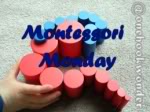
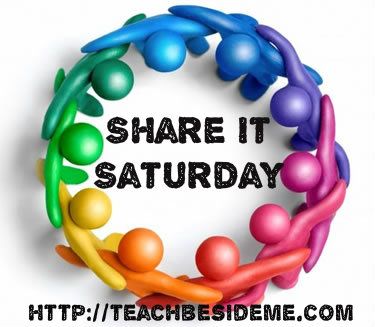


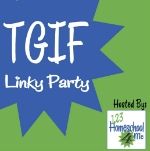

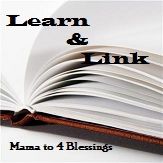


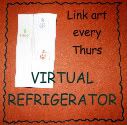
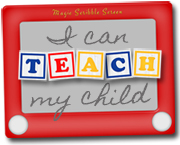
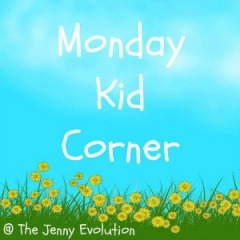

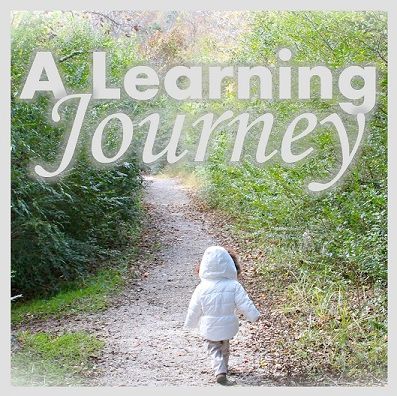






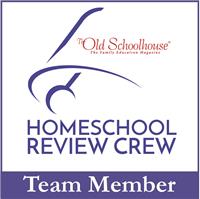
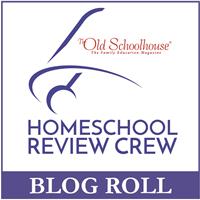





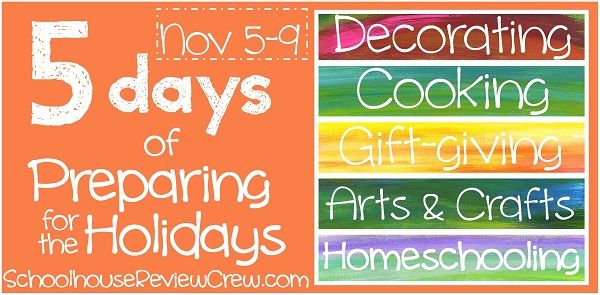



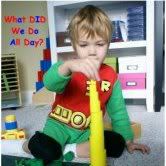



What a great list! Thanks for sharing.
ReplyDeleteWhat a great mommy you are!
ReplyDeleteThose sombreros are adorable! You have a lot of great ideas! Thanks for sharing...
ReplyDeleteI love the eyeball on the "more than/less than" symbol!
ReplyDeleteGreat post! So many fun ideas :)
ReplyDeleteThank you for leaving comments ladies. It really means a lot to me. I hope you had a chance to visit The Schoolhouse Review Crew blog link at the bottom for more arts-n-crafts. This was such a fun post to put together! Alyssa enjoyed herself as well. Did anyone try the activities?
ReplyDeleteLots of fun ideas! Thanks for sharing!
ReplyDeleteStefanie, So glad you stopped by. The activities were loads of fun!
ReplyDeleteJennifer, I shared my post on Monday Kid Corner. Thank you for the invite.